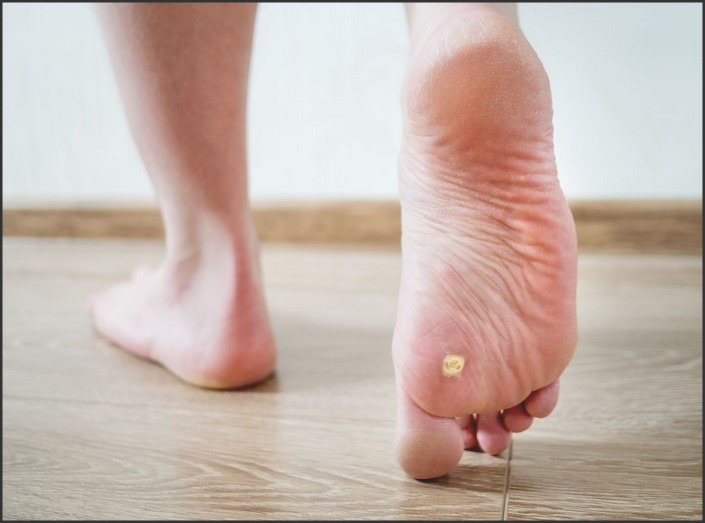
Seed warts are a common skin condition that can affect the feet. They are caused by a virus and can be painful and unsightly. Fortunately, there are several treatments available to remove seed warts and prevent them from coming back. In this article, we will discuss the causes of seed warts, removal methods, and preventive tips. We will also provide information on when to seek medical attention. By understanding the causes and treatments of seed warts, you can take steps to protect your feet and keep them healthy.
How to Identify a Seed Wart on Your Foot: Symptoms, Causes, and Diagnosis
Seed warts are a common skin condition that can affect the feet. They are caused by a virus and can be quite painful. If you think you may have a seed wart on your foot, it is important to identify the symptoms, understand the causes, and get a proper diagnosis.
Symptoms
Seed warts are usually small, round, and have a rough surface. They may be flesh-colored, yellow, or brown. They may also have black dots in the center, which are actually tiny blood vessels. Seed warts can be painful when pressure is applied to them.
Causes
Seed warts are caused by a virus called human papillomavirus (HPV). This virus is highly contagious and can be spread through direct contact with an infected person or object. It can also be spread through contact with contaminated surfaces, such as floors or showers.
Diagnosis
If you think you may have a seed wart on your foot, it is important to get a proper diagnosis. Your doctor can examine the wart and determine if it is indeed a seed wart. They may also take a sample of the wart and send it to a lab for testing.
Treatment
Once a seed wart is diagnosed, there are several treatment options available. These include over-the-counter medications, cryotherapy, laser therapy, and surgery. It is important to discuss the best treatment option with your doctor.
Seed warts can be painful and uncomfortable. If you think you may have a seed wart on your foot, it is important to identify the symptoms, understand the causes, and get a proper diagnosis. With the right treatment, you can get rid of the wart and get back to living your life.
Seed Wart Removal: What Are Your Options and What to Expect
Seed warts are a common skin condition that can be unsightly and uncomfortable. Fortunately, there are several options available for seed wart removal. Depending on the size and location of the wart, your doctor may recommend one of the following treatments:
Cryotherapy: Cryotherapy is a common treatment for seed warts. During this procedure, your doctor will use liquid nitrogen to freeze the wart. This will cause the wart to blister and eventually fall off. This procedure is usually done in a doctor’s office and can be repeated if necessary.
Salicylic Acid: Salicylic acid is a topical medication that can be used to treat seed warts. It works by breaking down the outer layer of the wart, allowing it to be removed more easily. Salicylic acid is available over-the-counter in the form of a cream, gel, or patch.
Laser Therapy: Laser therapy is a newer treatment option for seed warts. During this procedure, a laser is used to destroy the wart. This procedure is usually done in a doctor’s office and can be repeated if necessary.
Surgical Removal: In some cases, your doctor may recommend surgical removal of the seed wart. This procedure is usually done in a doctor’s office and involves cutting away the wart.
No matter which treatment option you choose, it is important to follow your doctor’s instructions carefully. This will help ensure that the treatment is effective and that the wart does not return. Additionally, it is important to keep the area clean and dry to prevent infection.
If you have any questions or concerns about seed wart removal, be sure to talk to your doctor. They can help you decide which treatment option is best for you and provide you with more information about what to expect.Seed warts on the foot can be an uncomfortable and unsightly condition, but with proper care and treatment, they can be managed. It is important to take preventive measures to reduce the risk of developing seed warts, such as wearing protective footwear and avoiding contact with infected surfaces. If a seed wart does develop, it is important to seek medical advice to determine the best course of treatment. With the right care and attention, seed warts can be managed and prevented.